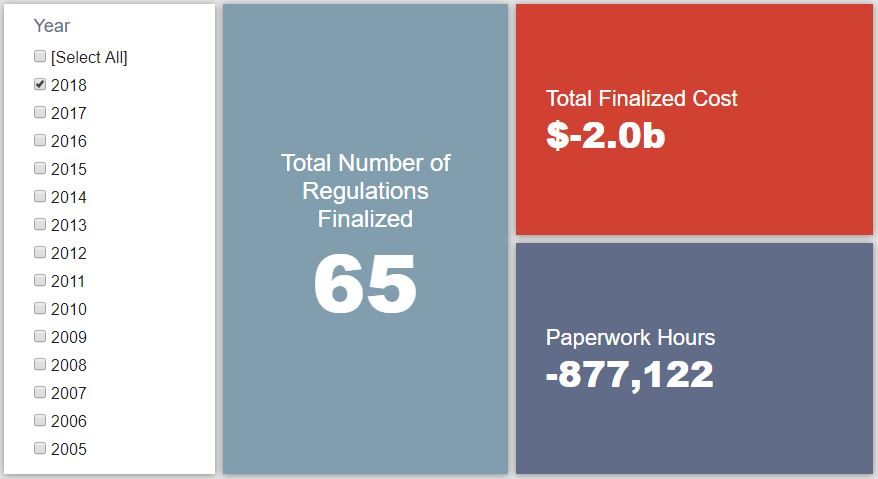Week in Regulation
April 2, 2018
$300 Million in New Costs
For the second consecutive week, net regulatory burdens increased. Between both proposed and final rules, agencies published roughly $303 million in net costs and 3,087 hours of additional paperwork. The vast majority of these new costs come from a gun control proposal seeking to regulate “bump-stocks.” The per capita regulatory burden for 2018 is negative $5.98.
Regulatory Toplines
- New Proposed Rules: 36
- New Final Rules: 63
- 2018 Total Pages of Regulation: 13,612
- 2018 Final Rules: -$2 Billion
- 2018 Proposed Rules: -$3 Billion
As part of the administration’s putative response to growing public concern over gun violence, the Department of Justice (DOJ) released its proposed rule regarding “Bump-Stock-Type Devices.” The proposal would categorize such devices as “machineguns,” which would consequentially restrict – and effectively ban – possession of such items by private citizens. The rulemaking faces a wide array of political criticisms, ranging from whether it is an effective response to gun violence on one side to whether DOJ and the government writ large has the legal authority to even sanction such items on the other end of the spectrum. In terms of purely economic effects, between the direct disposal costs and the forgone value to manufacturers and sellers of such items, DOJ estimates that the proposal could cost affected entities and persons roughly $300 million over the next decade.
Tracking Regulatory Modernization
The one action contributing cost savings towards the “regulatory budget” established under Executive Order (EO) 13,771 was a National Aeronautics and Space Administration (NASA) rule. The rule moves NASA to an entirely electronic invoicing system for processing payments transactions with outside contractors. The agency estimates that this change will save the affected entities $144,485 annually.
According to AAF analysis, since the start of FY 2018 (beginning Oct. 1, 2017), executive agencies have promulgated 28 deregulatory actions with quantified cost savings against five regulatory measures that impose costs, under the rubric created by EO 13,771 and the administration’s subsequent guidance document on the matter. These rules combine for a net annual savings of roughly $719.5 million. This means that agencies have thus far surpassed the administration’s cumulative goal for FY 2018 of $687 million in net annual savings.
Click here to view AAF’s examination of the administration’s progress under the “one-in, two-out” executive order through the end of Fiscal Year 2017.
State of Major Obama-Era Initiatives
Based on total lifetime costs of the regulations, the Affordable Care Act has imposed costs of $53 billion in final state and private-sector burdens and 176.9 million annual paperwork hours.
Since passage, the Dodd-Frank financial reform legislation has produced more than 82.9 million final paperwork burden hours and imposed $38.9 billion in direct compliance costs.
Total Burdens
Since January 1, the federal government has published $5 billion in net cost savings ($2 billion from final rules) and new paperwork burdens amounting to 1.4 million hours (however, this includes 877,122 hours cut under final rules). Click here for the latest Reg Rodeo findings.











